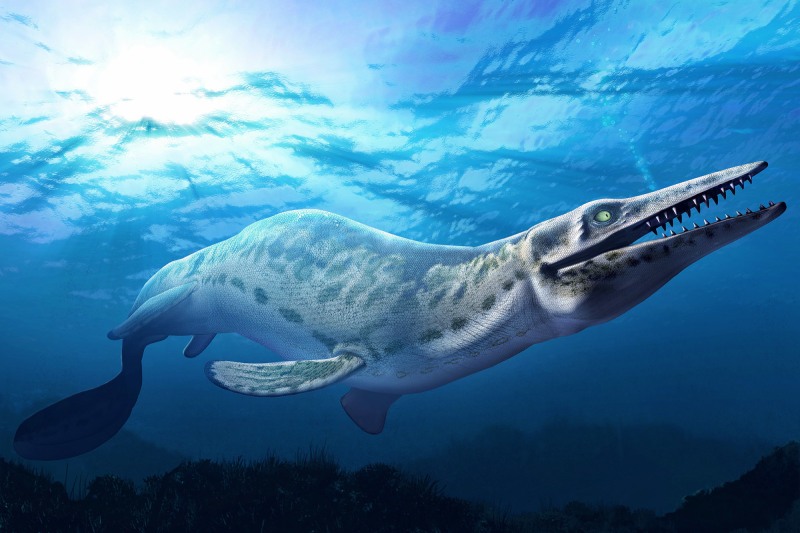Approximately 72 million years ago, a massive creature known as the “blue dragon” roamed the Pacific Ocean.
The creature has been dubbed Wakayama Soryu, or Blue Dragon, according to study that was published in the Journal of Systematic Paleontology.
Amazing discovery
The largest extinct marine reptile from the Late Cretaceous era, the mosasaur, was the top predator. It was given the name Wakayama Prefecture in Japan, the location of the fossil discovery.
The astounding discovery was reported in the Palaeontology journal by Takuya Konishi, an associate professor at the University of Cincinnati, and a group of international co-authors.
In an explanation provided on the University of Cincinnati website, Konishi stated: “Dragons are mythical creatures who live in the sky and produce thunder in China. In Japanese mythology, they turned aquatic.”
Co-author Akihiro Misaki found the virtually complete mosasaur fossil back in 2006.
Misaki discovered an interesting black fossil in the sandstone while searching for fossils of invertebrates known as ammonites.
According to Konishi, the Wakayama Soryu fossil specimen is the most complete mosasaur skeleton ever discovered in Japan or the northwest Pacific.
“In this case, it was nearly the entire specimen, which was astounding,” Konishi added.
Wakayama Soryu: The appearance
The top predator, which lived prehistoric waters, possessed distinct characteristics that complicated straightforward categorization.
Its huge paddle-shaped flippers and crocodile-like head were described by biologists. The flippers on its back were larger than those on its front. According to researchers, “the large front fins might have helped with rapid manoeuvring, while its large rear fins might have provided pitch to dive or surface.”
They also assume that the blue dragon’s tail, like that of other mosasaurs, would have produced strong, quick acceleration during its fish-hunting and propulsive activities.
The question is how each of these five hydrodynamic surfaces was applied. Which ones were used for steering? For propulsion, which?” Konishi stated.
“It opens a whole can of worms that challenges our understanding of how mosasaurs swim,” he said.
Konishi, a 15-year mosasaur researcher, claimed that the apex predator was a deadly hunter because it possessed almost binocular vision. The enormous creature, which measured more than five feet in length, resembled a great white shark in its dorsal fin.
Topics #72 million #ancient #blue dragon #dragon #giant blue dragon #mosasaur #news #Pacific #Pacific waters #research










